Klue Compete
The Competitive Enablement Platform
Learn More
FIND OUT MORE >

Every single day, you’re winning and losing business.
But do you know why?
What about your executive team — do they know why? How about your Product team? Sales at least? I’m sure they have lots of ideas on why you’re losing deals (cough *product* cough)… but can you trust that intel?
There happens to be one — sometimes elusive — group of people that know exactly why your deals are won and lost: your buyers.
Buyers make their decisions based on a variety of factors: product functionality, the sales experience, pricing, perception of your brand, customer service offering, and more.
Knowing which of these factors are driving your success or failure in deals is incredibly valuable.
That’s where win-loss comes in.


And while a competitive enablement program tracks many different types of intel about your competitors and your broader market, what makes win-loss unique is that it’s specifically targeting insights about how buying decisions are made by your customers and prospects.
And for many companies, those decisions are what effectively competing all boils down to.
Win-Loss analysis is the process of collecting and analyzing intelligence from your market on why you win and lose deals. What you obtain through this process is a very specific type of intel that provides a window into the buyer’s world.
But like all other forms of valuable intelligence, win-loss insights do not have an impact if they aren’t being used by the rest of the organization.
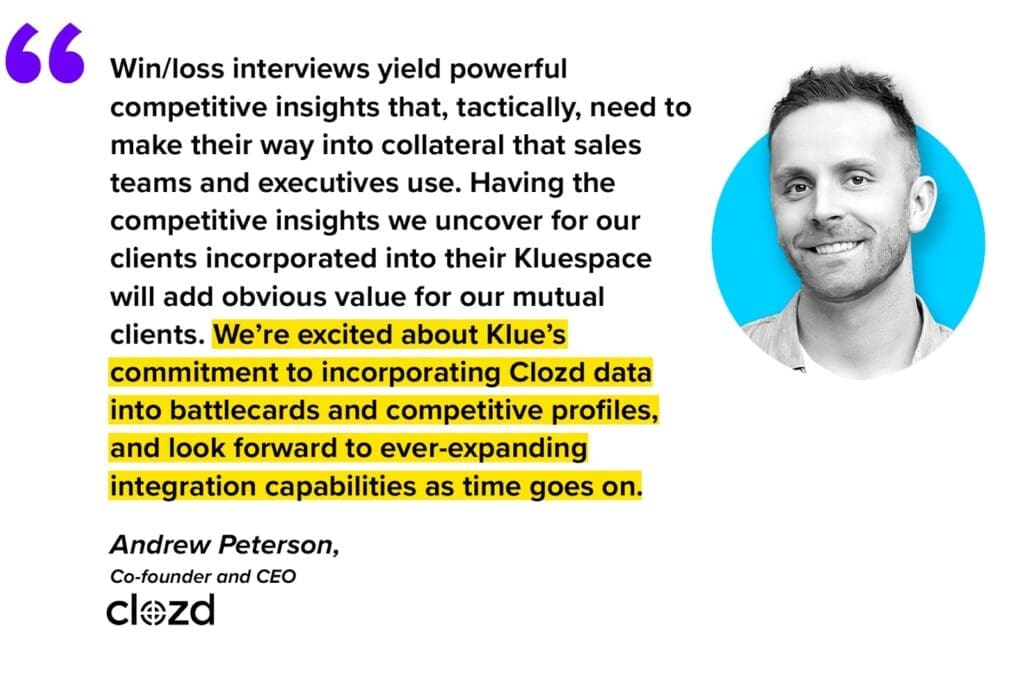

Incorporating Win-Loss analysis into your competitive enablement program ensures that those valuable insights are understood within the broader market context, and are actioned upon by the appropriate stakeholder groups across the organization.
If you have an existing win-loss program, or are considering one, read on — this article is for you.
Firstly, it is important to appreciate win-loss insights within the broader business context.
Win-Loss analysis is most effective when interview insights are combined with data from other sources, such as feedback from your sales and customer-facing teams, analysis of live call recordings, online customer reviews, and more.
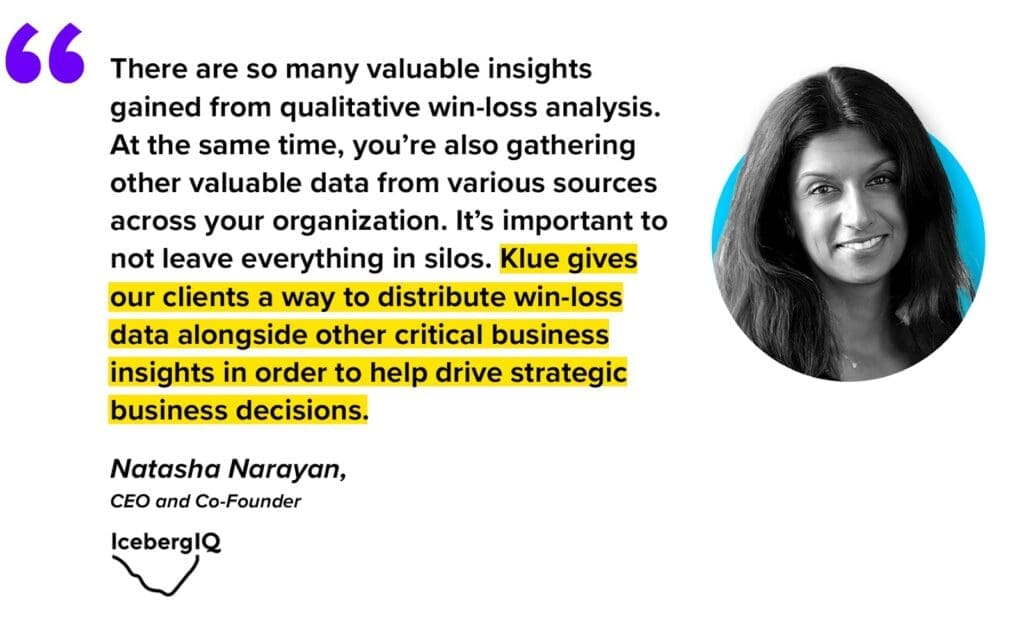

Each source of win-loss intel has benefits and drawbacks. For example, CRM data can be extremely valuable, but relies on having good CRM data hygiene and assumes that sales reps know the real reasons they won or lost.
Surveys can be a great way to start getting buyer feedback, and although the volume of responses can be high, the depth of the insights are generally lower.
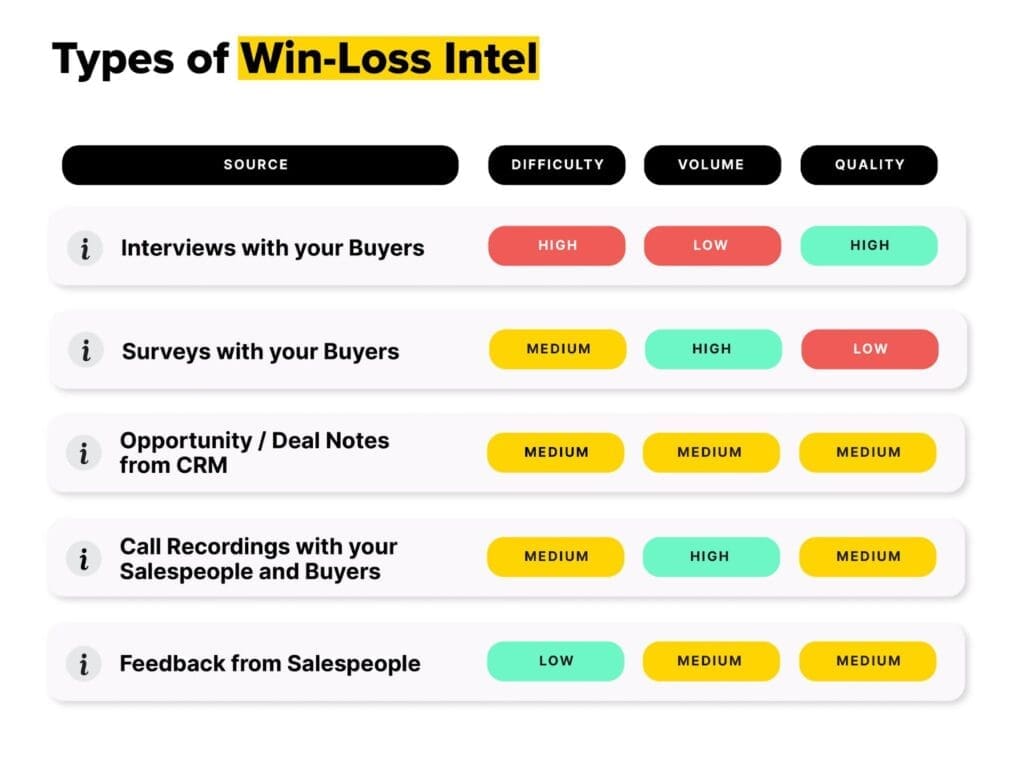

Win-Loss interviews are a valuable source of intel because the interviewer can ask follow-up questions and dive deep into potential areas that you’d like to target. Because win-loss interviews often require a fair amount of effort, many organizations outsource their win-loss interview program to an external provider, like DoubleCheck Research, Primary Intelligence, Clozd, and so on.
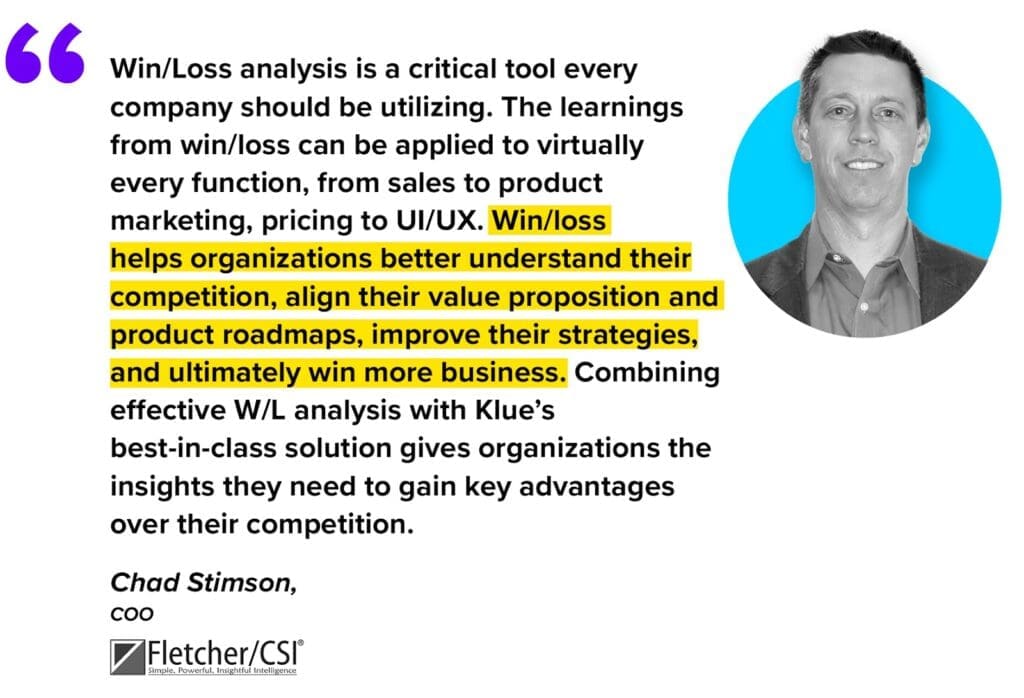

If you have a win-loss program where you are interviewing buyers — whether your interviews are managed internally or with a win-loss partner — what’s important is delivering those insights to the teams that matter, so that they can be actioned on.
That’s where Klue, your competitive enablement platform, comes into play.
Take the interactive tour below for a step-by-step walkthrough on how you can collect, centralize, and distribute Win-Loss insights using Klue.
Let’s break down the process in more detail.
If you’re a product marketing or competitive intelligence team that is also responsible for win-loss, this one’s for you.
Using Klue, you can centralize all your Win-Loss insights into Klue Alerts, alongside all of your other competitive and market intelligence.
The interactive tour above shows how you can forward a win-loss report via email into Klue, but there are other methods for accomplishing this:
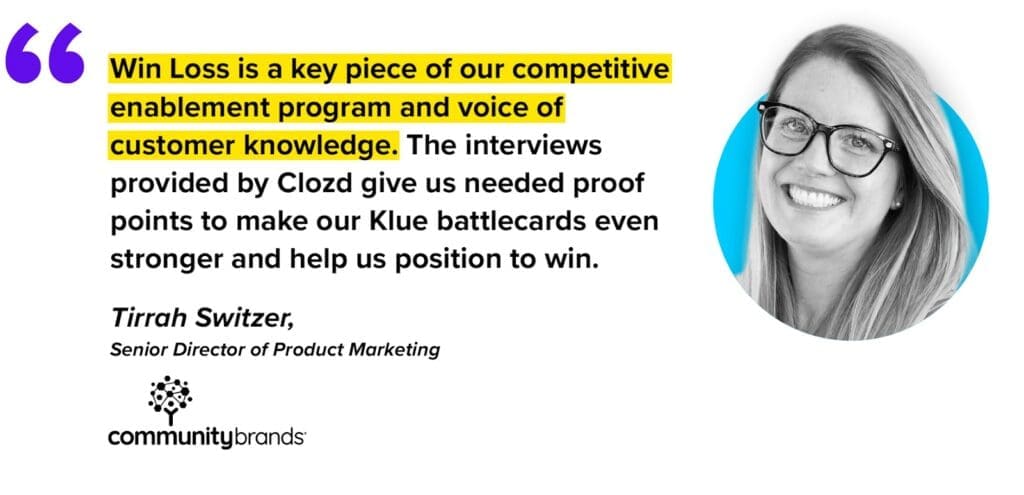

The first way to start incorporating win-loss insights into your competitive enablement program, is to create a Win-Loss Board in Klue.
Klue Boards give you a single source of truth to gather all of your win-loss insights and make them easily accessible to your various stakeholder teams.
It’s not necessary to put all your raw interview data into your Win-Loss Board. You likely have those detailed notes in decks or docs, or in the platform that your win-loss provider uses (e.g. Dovetail, Airtable).
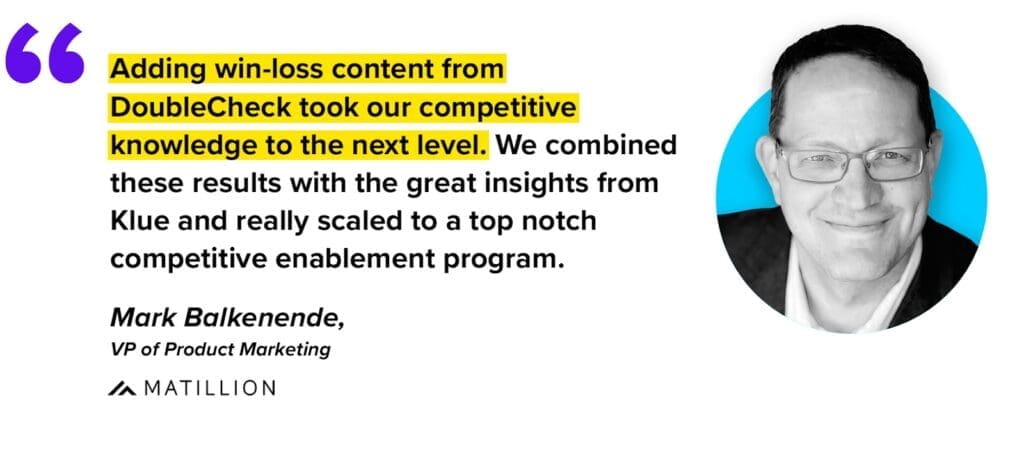

Now that you have all of your win-Loss insights centralized in one place, you’ll want to create a simple view for your stakeholders to access the win-loss insights that are most relevant to them.
In Klue, a Battlecard is simply a selection of Cards that you want to show to a specific audience. By selecting the Cards you want to display, you can easily create a Win-Loss Dashboard for your stakeholders (or, multiple Dashboards for different stakeholder groups).
Take the interactive tour below for a walkthrough of a sample Win-Loss Dashboard using Klue Battlecards.
When inputting insights into Klue, answer this question: What win-loss insights do you want to share with others? What actions can we take?
Some examples of this may include:
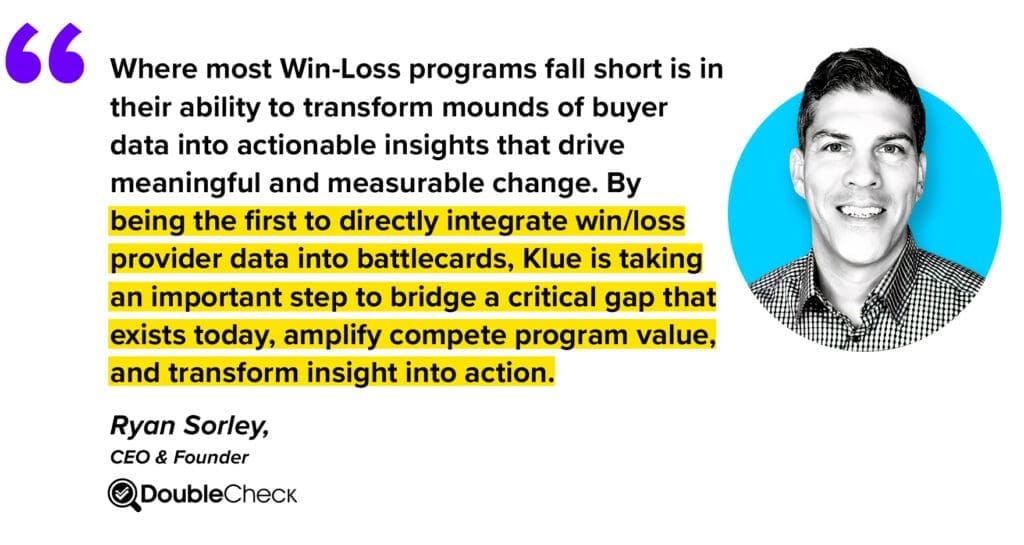

Last but not least, it’s critical that you communicate these takeaways and action items to the various stakeholder groups across your organization.
Like any other kind of intelligence, Win Loss intel does not have an impact if it’s not being used and actioned on. Hosting your Win Loss Dashboard in Klue and incorporating it into your overall Competitive Enablement program is the first step toward creating real tangible impact for the business.
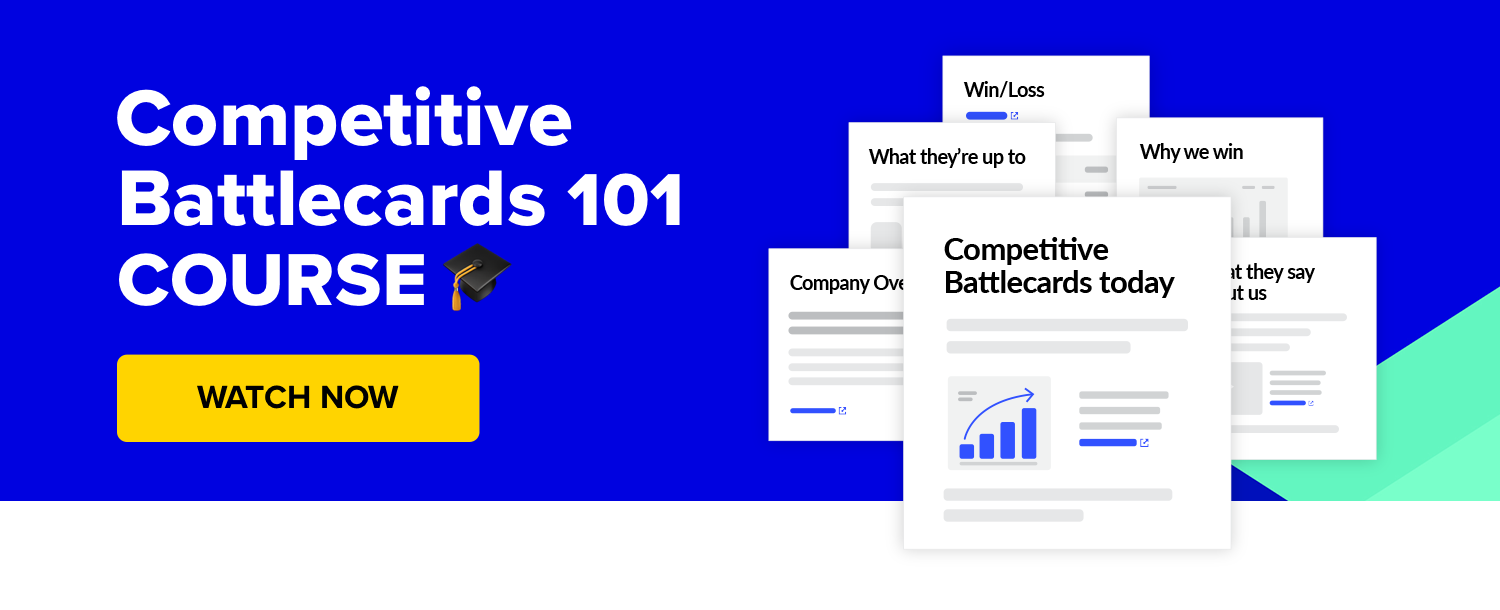



Competitive Enablement
Product marketers conducting competitive research are drowning in reviews, reports, and messy notes. Here's how Klue's AI foundation will help you complete this analysis in seconds, not weeks.


Competitive Enablement
The topic of Large Language Models (LLMs) has a lot of confusion. Here's what you need to know about how Klue is working with them.


Let’s do it. Tell us a bit about yourself and we’ll set up a time to wow you.
Let's do it. Tell us a bit about yourself and we'll set up a time to wow you.
XLet's do it. Tell us a bit about yourself and we'll set up a time to wow you.
XSubscribe to get our latest AI functionality and news in your inbox.
XOur Buyer Pulse feature, set to launch in Q2 2024, offers valuable insights into the factors influencing buyer decisions in your pipeline. By signing up for the waitlist, we can better gauge interest and proactively engage with you to streamline the setup and integration process before the feature becomes widely available.
X